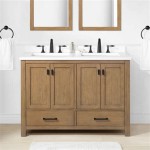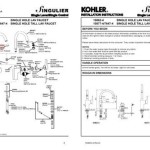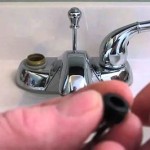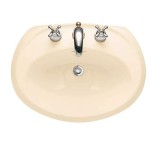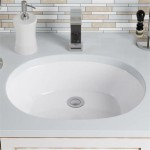Best Bathroom Sink Faucets of 2022: A Comprehensive Guide
Selecting the right bathroom sink faucet involves balancing aesthetics, functionality, and durability. The year 2022 saw the introduction and refinement of various faucet designs, materials, and technologies, offering consumers a wide array of options to consider. This article provides a comprehensive overview of some of the best bathroom sink faucets available in 2022, categorized by their key features and intended applications. The focus is on presenting factual information to aid readers in making informed purchasing decisions.
Factors influencing the selection of a bathroom sink faucet include the existing plumbing setup, the style of the bathroom, the desired water pressure, and the intended user base. A faucet suitable for a small powder room might differ significantly from one chosen for a master bathroom. Furthermore, water conservation and ease of maintenance are increasingly important considerations for environmentally conscious consumers.
The materials used in faucet construction play a critical role in their longevity and performance. Brass is commonly used for the faucet body due to its resistance to corrosion and high durability. Finishes, such as chrome, brushed nickel, and oil-rubbed bronze, not only affect the faucet's aesthetic appeal but also its resistance to scratches and water spots. Ceramic disc valves are often preferred for their reliability and leak-resistant properties.
Key Point 1: Faucet Types and Mounting Options
Bathroom sink faucets can be broadly categorized based on their mounting style and handle configuration. Understanding these distinctions is crucial for selecting a faucet that is compatible with the existing sink and countertop setup.
Center-set Faucets: Center-set faucets are designed for sinks with three holes that are typically four inches apart. They often feature a single handle that controls both the water temperature and flow. Alternatively, some center-set faucets may have two handles mounted on a base that covers the center hole. These faucets are generally easier to install than more complex models and are well-suited for smaller bathrooms or powder rooms.
Single-Hole Faucets: As the name suggests, single-hole faucets require only one hole in the sink or countertop. They typically feature a single lever or handle that controls both the water temperature and flow. These faucets offer a clean, minimalist aesthetic and are often preferred for modern bathroom designs. Some single-hole faucets may include a decorative escutcheon plate to cover any unused holes in the sink.
Widespread Faucets: Widespread faucets are designed for sinks with three holes that are typically eight inches apart or wider. They feature separate handles for hot and cold water, allowing for precise temperature control. Widespread faucets offer a more traditional and elegant look and are often chosen for larger bathrooms. The installation process for widespread faucets can be more complex than that of center-set or single-hole faucets.
Vessel Faucets: Vessel faucets are designed to be used with vessel sinks, which sit on top of the countertop rather than being recessed into it. These faucets are typically taller than other types of bathroom sink faucets to accommodate the height of the vessel sink. They come in a variety of styles, including single-handle, widespread, and wall-mounted options. Vessel faucets add a distinctive design element to the bathroom and are often chosen for their unique aesthetic.
Wall-Mounted Faucets: Wall-mounted faucets are installed directly into the wall behind the sink, rather than onto the sink or countertop. This type of faucet offers a clean, modern look and can free up valuable counter space. Wall-mounted faucets require careful planning during the plumbing installation phase and may be more difficult to retrofit into an existing bathroom.
Key Point 2: Material and Finish Considerations
The choice of materials and finishes significantly impacts the longevity, performance, and aesthetic appeal of a bathroom sink faucet. Selecting durable materials and finishes that resist corrosion, scratches, and water spots is essential for maintaining the faucet's appearance and functionality over time.
Brass: Brass is a common material for the faucet body due to its durability, resistance to corrosion, and ability to withstand high water pressure. Brass faucets are typically more expensive than faucets made from other materials, such as zinc, but they offer superior performance and longevity. Lead-free brass is increasingly common to meet environmental and health regulations.
Stainless Steel: Stainless steel is another durable and corrosion-resistant material that is often used in faucet construction. Stainless steel faucets are typically more affordable than brass faucets and offer a clean, modern look. They are also relatively easy to clean and maintain.
Zinc: Zinc is a more affordable material that is often used in the construction of less expensive bathroom sink faucets. Zinc faucets are less durable than brass or stainless steel faucets and may be more susceptible to corrosion over time. However, zinc faucets can be a good option for budget-conscious consumers.
Chrome Finish: Chrome is a popular finish for bathroom sink faucets due to its shiny, reflective appearance and its resistance to corrosion and scratches. Chrome faucets are relatively easy to clean and maintain, but they can show water spots and fingerprints.
Brushed Nickel Finish: Brushed nickel is a matte finish that offers a more subtle and understated look compared to chrome. Brushed nickel faucets are less likely to show water spots and fingerprints and are often preferred for their easy maintenance. This finish offers visual warmth and easily hides minor imperfections.
Oil-Rubbed Bronze Finish: Oil-rubbed bronze is a dark, antique-looking finish that can add a touch of elegance and warmth to the bathroom. Oil-rubbed bronze faucets are typically more expensive than chrome or brushed nickel faucets and may require more maintenance to prevent the finish from wearing off over time.
Matte Black Finish: Matte black is a modern and stylish finish that has become increasingly popular in recent years. Matte black faucets offer a dramatic contrast to lighter-colored sinks and countertops and can add a touch of sophistication to the bathroom. They are also relatively easy to clean and maintain.
Key Point 3: Water Conservation and Technological Advancements
Water conservation is an increasingly important consideration for consumers when selecting a bathroom sink faucet. Many manufacturers now offer faucets with features designed to reduce water consumption without sacrificing performance. Technological advancements have also led to the development of smart faucets with features such as touchless operation and temperature control.
Low-Flow Faucets: Low-flow faucets are designed to reduce water consumption by limiting the flow rate of water. According to the EPA's WaterSense program, a low-flow bathroom sink faucet should have a maximum flow rate of 1.5 gallons per minute (GPM). Low-flow faucets can save a significant amount of water over time, especially in high-use bathrooms.
Aerators: Aerators are devices that are attached to the faucet spout to mix air with the water stream. This creates a larger, more forceful water stream that uses less water overall. Aerators are a simple and inexpensive way to reduce water consumption without sacrificing water pressure.
Touchless Faucets: Touchless faucets use sensors to detect when hands are placed under the faucet and automatically turn the water on. This can help to reduce water waste by preventing the water from running unnecessarily. Touchless faucets are also more hygienic than traditional faucets, as they eliminate the need to touch the faucet handle.
Temperature Control: Some bathroom sink faucets are equipped with temperature control features that allow users to set the desired water temperature in advance. This can help to prevent scalding and ensure a comfortable water temperature every time. Some smart faucets can even be programmed to automatically adjust the water temperature based on the user's preferences.
Smart Faucets: Smart faucets are equipped with technology that allows them to be controlled remotely via a smartphone or other device. Users can use a smartphone app to turn the faucet on and off, adjust the water temperature, and monitor water consumption. Smart faucets can also be integrated with other smart home devices, such as voice assistants, to provide a seamless and convenient user experience.
Choosing the best bathroom sink faucet for a specific need requires careful consideration of the faucet type, material, finish, and water conservation features. Understanding the various options available is crucial for making an informed decision that balances aesthetics, functionality, and environmental responsibility. The faucets described represent a selection available throughout 2022.

10 Best Bathroom Sink Faucets For 2024 The Jerum Post

5 Best Bathroom Faucets 2024

5 Best Bathroom Faucets 2024

Top Best Bathroom Faucet 2024

10 Best Bathroom Faucet For 2024 Storables
:max_bytes(150000):strip_icc()/BHG-best-bathroom-faucets-6745839-8892feb3c35d41c7ae407d7c8f2ed427.jpg?strip=all)
The 12 Best Bathroom Faucets Of 2024
:max_bytes(150000):strip_icc()/best-bathroom-faucets-4170067-3bad3284e9f742eeb844016d088efcc0.jpg?strip=all)
The 11 Best Bathroom Faucets Of 2024

Best Bathroom Sink Faucets Of 2024 In Toronto

10 Best Bathroom Faucets In 2024 Latest Guide

9 Best Ing Bathtub Faucets For 2024 The Jerum Post
